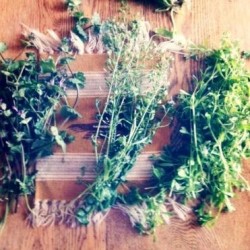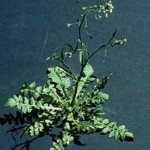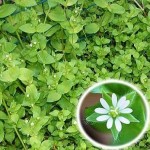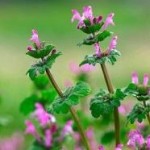 As spring approaches, your interest may be piqued to see what nutritive, medicinal weeds might be sprouting around the neighborhood. It probably sounds pretty odd that this was my first reaction to spring, but as an herbalist who studied with the amazing Nicole Telkes of the Wildflower School of Botanical Medicine here in Austin, TX, I know that healthful delights can be found almost anywhere!
As spring approaches, your interest may be piqued to see what nutritive, medicinal weeds might be sprouting around the neighborhood. It probably sounds pretty odd that this was my first reaction to spring, but as an herbalist who studied with the amazing Nicole Telkes of the Wildflower School of Botanical Medicine here in Austin, TX, I know that healthful delights can be found almost anywhere!
Nicole emphasizes a focus on native plant allies in our region, instead of the potentially more popular ‘commercialized’ herbs that are sometimes very difficult to obtain or possibly endangered as a species. It’s amazing what we dismiss as pests in our gardens and landscape that are actually brimming with body-nurturing vitamins and medicinal properties. For example, you’ve probably had cleavers stick to your pants or shoes at one point in the spring with no idea that those little green things have amazing lymph, kidney and skin-supporting properties! I know that I’ve pulled what felt like tons of it out of my garden in the past, now wishing that I had juiced and eaten them for the amazing nutritional support. There’s also something to be noted about vitality in regard to using the whole plant, especially soon after it’s harvested, providing what I can only describe as an invigorating experience.
For all of these reasons, I began to look around my own backyard and neighborhood. Our little green friends can provide so much life and nutrition if you know where to look and harvest. I wanted to share my own medicinal weed harvest experience as potential encouragement to find your connection to some pretty amazing little plants that don’t get their due respect. There are a few easily identifiable weeds to start your exploration into the world of plant medicine. The following are three that I consider to be the easiest to identify, safe and packed with nutrition and medicine.
- Moves lymph, reduces inflammation internally and externally, nutritive, and can soften tissues in regard to cysts. A powerful medicine, some herbalists build whole practices from this particular weed. Great for immediate consumption (like blending) or prepared as oils, salves and balms.
- Moves lymph, supports the kidneys (soothing, cooling, diuretic properties). It’s also great for topically application, it reduces inflammation and can be applied to things like insect bites for soothing relief. Also great when frozen into ice cubes for this purpose.
- Nutritive, contains an array of vitamins, including iron, and antioxidants.
After harvesting and removing the less vital parts (browning leaves, etc.), I blended them in my blender with a bit of coconut water and honey. It was delicious and vibrantly green! You can add fruits, veggies, other liquids and many other options, of course. This is a great project for the family, and an important way to help our next generation foster their respect and curiosity for the beautiful world of plants. These are great to throw in salads and make for a prettier presentation, as well. I especially like chickweed in mine.
 Shephard’s Purse (Capsella Bursa-Pastoris)
Shephard’s Purse (Capsella Bursa-Pastoris)
NOTE: I harvested this one for personal issues that I was trying to resolve and may not be appropriate for individual use. Please stick to the other plants if you have any uncertainties. This is a powerful herb that is traditionally used to stop hemorrhaging and bleeding. It can also support the kidneys as a diuretic as well as more complex kidney issues. Today it is used most often by women for pre-menstrual problems, long periods and menstrual cramps. A great ally for girls and women.
When considering harvesting your own weeds, make sure you feel comfortable identifying the plant (speak to a certified herbalist if you are unsure). Also be mindful of the conditions around the plant: Is it on the side of the road, being exposed to vehicle fumes from traffic? Or is it in a place that looks free of environmental hazards, like your garden?
Last, when harvesting local weeds make sure they are generally abundant and potentially invasive which will give the go-ahead for harvesting. Please note that this is not necessarily the case when harvesting most other herbs and plants. There are a variety of ecological factors to consider in keeping balance to the vibrant population of our green plant allies. Please speak to a Certified Herbalist at any Peoples location for advice.
by Jessica Thompson, BS, Certified Herbalist.



